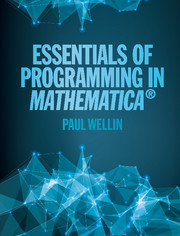8 - Graphics and visualization
Published online by Cambridge University Press: 05 December 2015
Summary
Visualization is a means to organize, model, and ultimately make sense of information. Functions, numerical and abstract data, text, and many other objects are commonly analyzed and studied using visual representations. Sometimes the representation is fixed spatially, as with mathematical functions or geometric objects; other times, as with information visualization, a spatial representation is not given and must be created; and sometimes the information is ordered temporally and so time itself becomes a visualization parameter. In any of these domains, the idea is to find a representation that best conveys the information and relationships under study.
Although built-in graphics functions are often sufficient for your visualizations, you will periodically need to create your own customized code to visualize the objects under study. Sometimes it is more efficient to build upon existing functions, modifying them as needed. Other times you will find it best to create such visualizations from scratch, using the graphics building blocks that make up Mathematica'ssymbolic graphics language.
This chapter covers how to construct functions for visualizing different kinds of data and objects using the basic building blocks of graphical expressions in Mathematica - primitives, directives, and options. We also look at ways to make dynamic graphics, including constructs for changing graphics dynamically using a pointing device such as a mouse. We then address ways to make your graphics more efficient by looking at the internal representation of graphics objects, as well as the use of multi-objects and an alternative representation that results in a compressed graphics object, GraphicsComplex. Finally, the chapter closes with several problems in bioinformatics, chemistry, geometry, and computer science, in which we use built-in graphics functionality together with the graphics language to create visualizations for some nontrivial problems.
- Type
- Chapter
- Information
- Essentials of Programming in Mathematica® , pp. 283 - 344Publisher: Cambridge University PressPrint publication year: 2015

